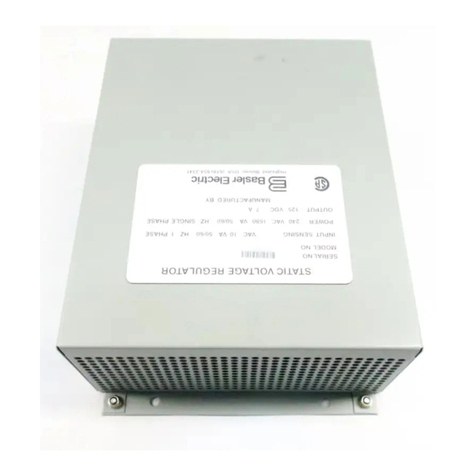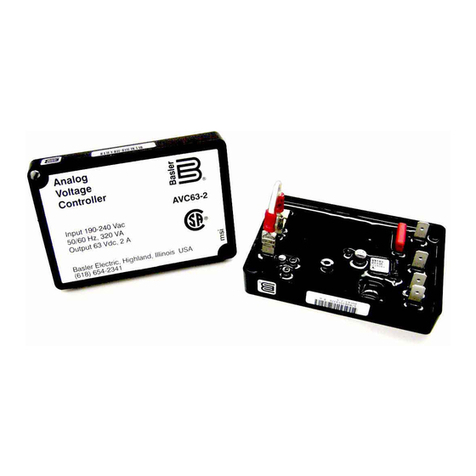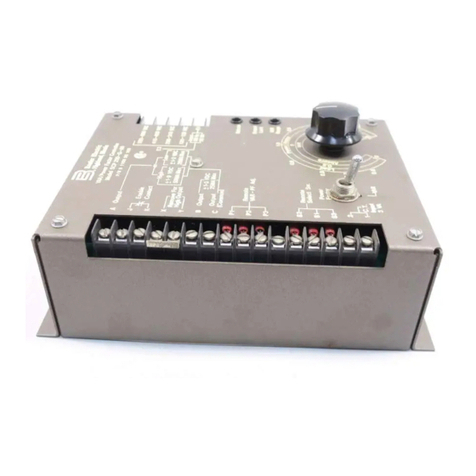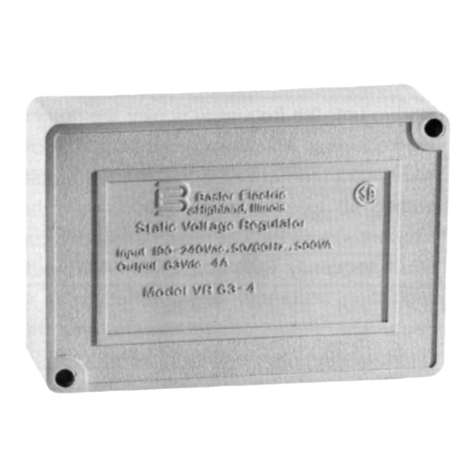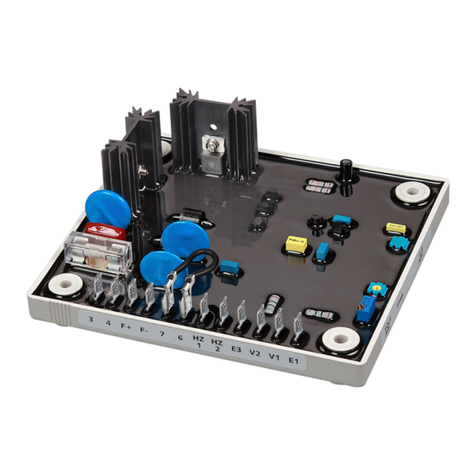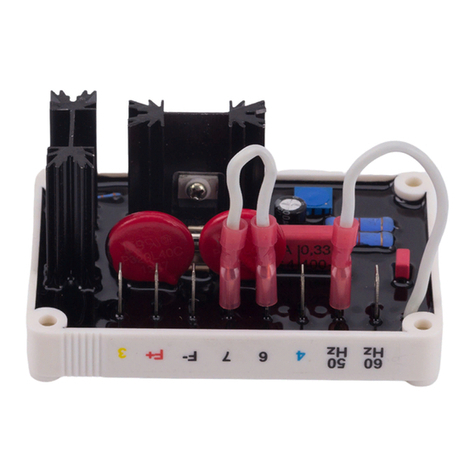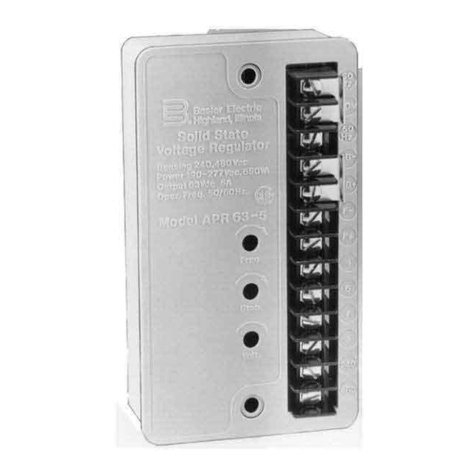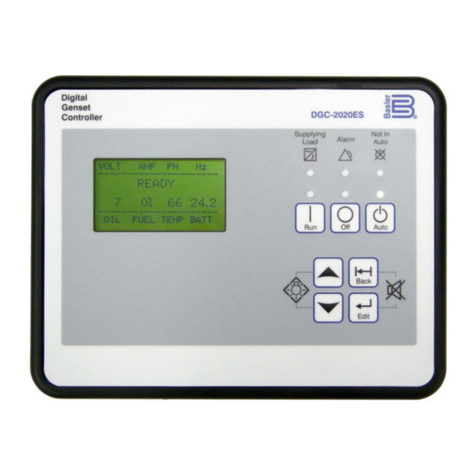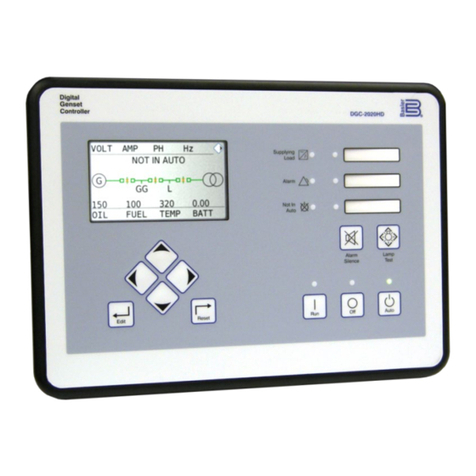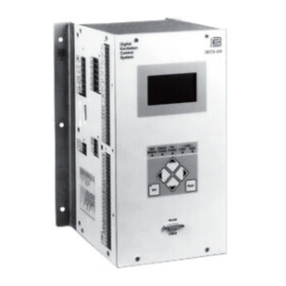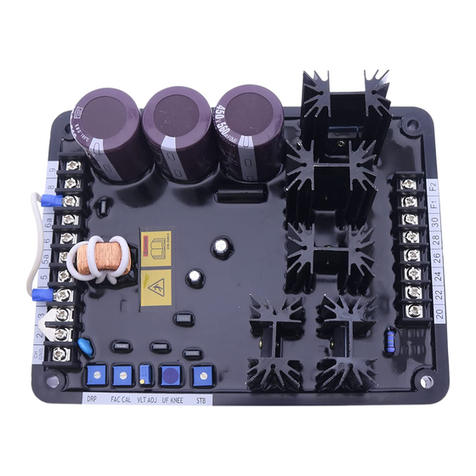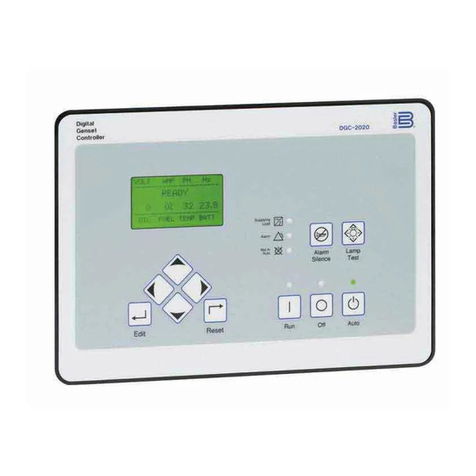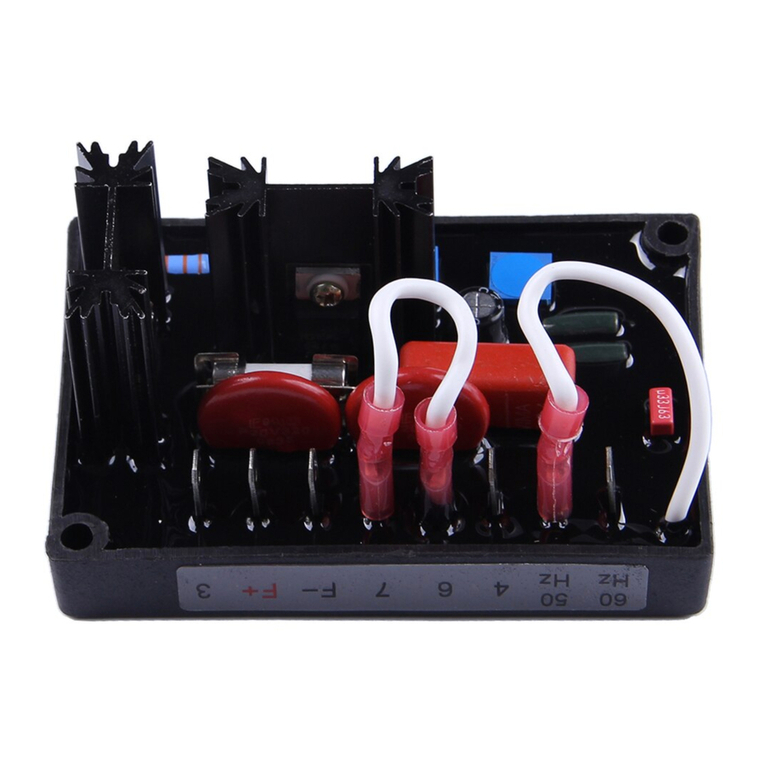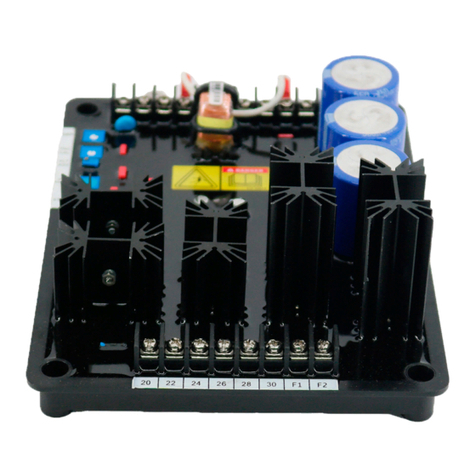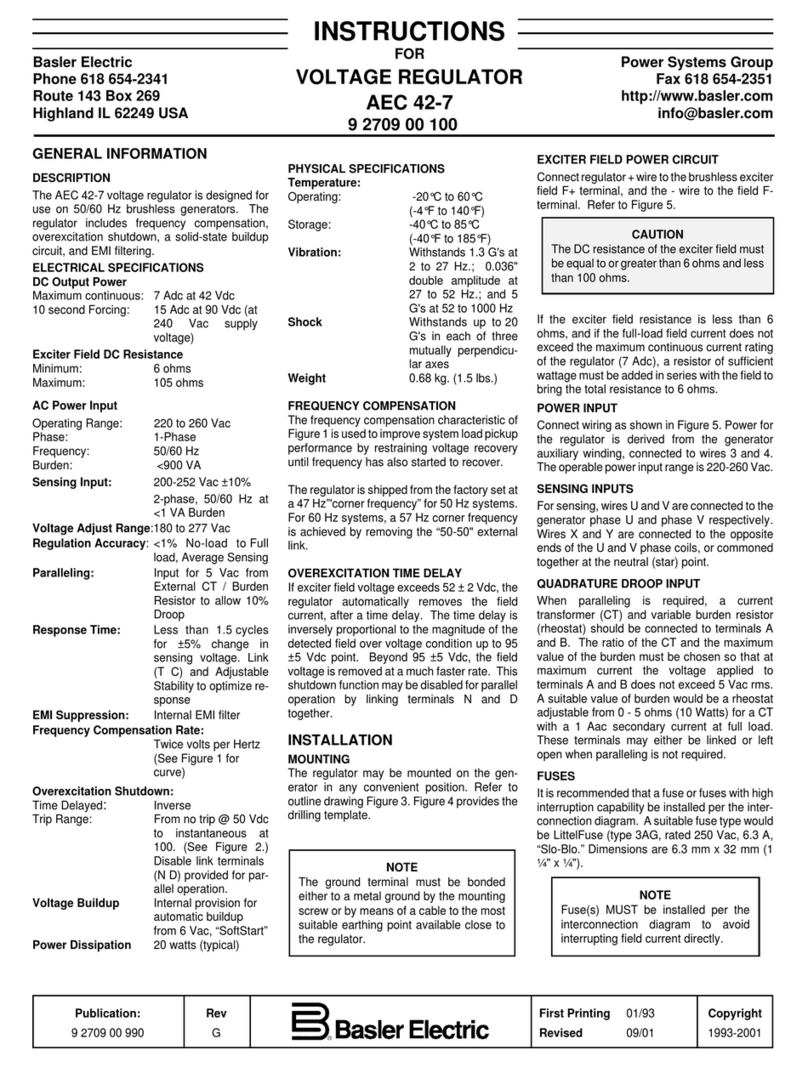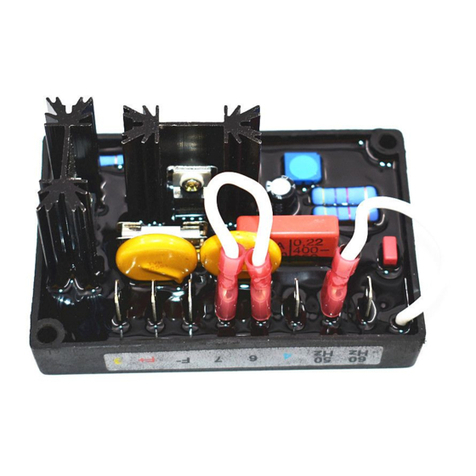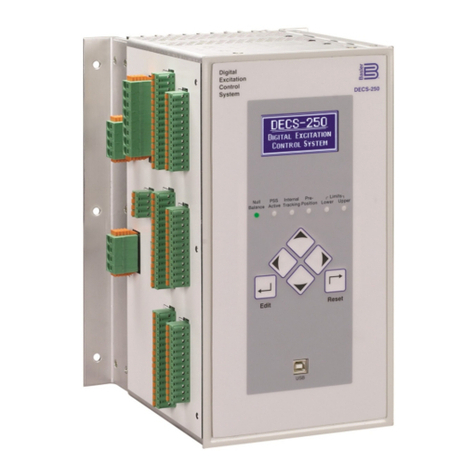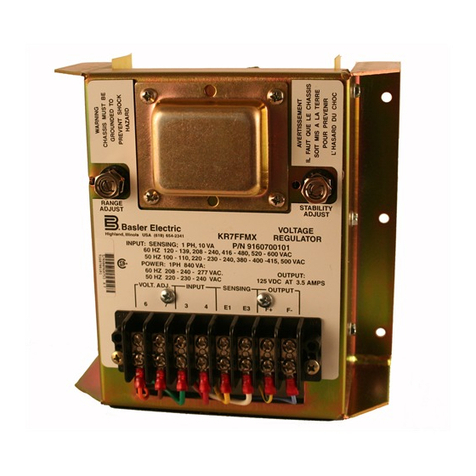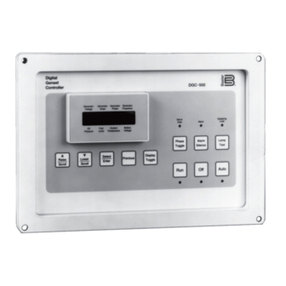Contents
General Information .................................................................................................................................... 1
Specifications ............................................................................................................................................ 1
Power Input*.......................................................................................................................................... 1
Output Rating......................................................................................................................................... 1
Input Sensing Voltage*(NEMA Standard) ............................................................................................ 1
Field Resistance .................................................................................................................................... 1
Temperature .......................................................................................................................................... 2
Vibration ................................................................................................................................................. 2
Mounting ................................................................................................................................................ 2
Weight.................................................................................................................................................... 2
Overall Dimensions................................................................................................................................ 2
Optional Features ...................................................................................................................................... 2
Accessories ............................................................................................................................................... 2
Model and Style Number Description........................................................................................................ 3
Principles of Operation............................................................................................................................... 5
Functional Circuits ..................................................................................................................................... 5
Application Information .............................................................................................................................. 5
Starting Large Motors or Providing Fault Current for Selective Breaker Tripping ................................. 5
Parallel Compensation .............................................................................................................................. 6
Reactive Droop Compensation (Droop)................................................................................................. 6
Reactive Differential Compensation (Cross-Current) ............................................................................ 6
Installation ................................................................................................................................................... 9
Mounting .................................................................................................................................................... 9
Interconnection ........................................................................................................................................ 11
General ................................................................................................................................................ 11
Regulator Sensing (Terminals E1, E2, and E3)................................................................................... 11
Field Power (Terminals F+ and F–) ..................................................................................................... 13
Interconnecting Regulator with Brush-Type Rotary Exciters (Terminal A–) ........................................ 13
Input Power (Terminals 3 and 4) ......................................................................................................... 13
Parallel Compensation (Terminals 1 and 2) ............................................................................................ 14
Reactive Droop Compensation (Droop) .................................................................................................. 14
Reactive Differential Compensation (Cross Current) .............................................................................. 14
Wiring....................................................................................................................................................... 18
Operation ................................................................................................................................................... 19
Operation at Reduced Speeds ................................................................................................................ 19
Voltage Shutdown ................................................................................................................................... 19
Adjustments............................................................................................................................................. 19
Stability Adjustment R4........................................................................................................................ 20
Generator Voltage Adjust Rheostat R1 ............................................................................................... 20
Nominal Voltage Range Set Adjust R3................................................................................................ 20
Wiring....................................................................................................................................................... 20
Initial Operation ....................................................................................................................................... 20
Single Unit Operation (No Load).......................................................................................................... 20
Instability .............................................................................................................................................. 21
Field Flashing .......................................................................................................................................... 21
Parallel Operation.................................................................................................................................... 22
Preliminary Instructions ....................................................................................................................... 22
Preliminary Operation .......................................................................................................................... 22
Conditions Necessary for Paralleling................................................................................................... 22
Metering ............................................................................................................................................... 22
Sequence of Operation (Parallel) ........................................................................................................ 23
Maintenance .............................................................................................................................................. 25
Preventive Maintenance .......................................................................................................................... 25
Corrective Maintenance........................................................................................................................... 25
Warranty and Repair Service .................................................................................................................. 25
